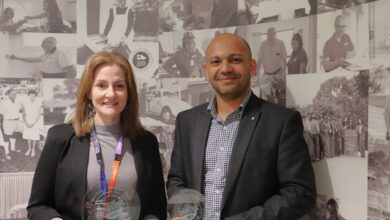Placing consumers in the driver’s seat
It’s not just the outcome of a health procedure now, patients are being asked what they think of the cost and the method of delivery. By Linda Belardi
Researchers are increasingly turning to the patient for clues about how health services could be delivered in the future. Deputy director of the Griffith Health Institute, Dr Jennifer Whitty, says the past decade has seen an exponential growth in research on how to capture consumer values and preferences.
Citizens’ juries and large-scale consumer surveys are now being used to quantitatively and qualitatively measure both patient and public preferences and to increase the size and strength of the consumer voice.
Health organisations and committees are also looking for new ways to incorporate the patient perspective into their decision-making.
“Patients can have a very unique perspective and a lived experience of a particular condition. Their preferences for how a health service or intervention is delivered can give insight and guide choices that are not available from other sources,” Whitty said.
“In Australia, we spend over $120 billion a year on healthcare and about 70 per cent of that is funded by the public purse. The input of the general public can give us some insight into the social values that are important to consider when resources are allocated and public healthcare priorities are set.”
In particular for patients, Whitty’s research at the Griffith University institute has shown that how a service or treatment is delivered can be just as important as the potential health benefit.
“It is not just health outcomes that matter, but the cost and the way that a service is delivered is important. Through methodological experiments we can also measure the relative strength of patient preferences for a particular characteristic of a service,” she says.
For example, a study by the Griffith Health Institute of patients with Achilles tendon pain found that patients were strongly averse to an injection treatment and were willing to pay significant out-of-pocket expenses to pursue alternative treatments.
Aspects of a treatment other than health outcomes are powerful predictors of patient uptake, says Whitty, and there is increasing recognition of the need to consider the acceptability of interventions alongside clinical trials of their effectiveness. “Even if something has clinical benefit, it needs to be acceptable to patients if it is to be taken up in practice.”
As part of an ARC linkage project, Whitty is currently using a citizens’ jury and large survey using choice-based experiments to assess consumer preferences for new models of emergency care in Queensland.
The study, which also involves Queensland Health, SA Health Network and the National Institute for Health and Clinical Excellence in the UK, is assessing consumer acceptability of using nurses or paramedics with specialist training to deliver emergency care in the home instead of a patient being brought to an emergency department.
The results will help inform policy decisions about how and where emergency care will be delivered in the future.
Similar to their function in the judicial system, a citizens’ jury in a healthcare context gathers a group of 20 individuals representing a diverse sample of the population to deliberate on a public health issue. Expert evidence is presented to them over the course of two days and the jury hands down a set of recommendations based on their discussion of the evidence.
Whitty says while studies show patients want their preferences to be considered in healthcare decision-making there is a lack of research to evaluate the extent to which these preferences ultimately influence policy. However, she says there is no doubt that consumer-based research is growing and gaining more prominence in healthcare.
South Australia’s Chief Nursing Officer, Lydia Dennett, says consumer expectations are increasing as patients have greater access to information and demand a greater say in their care.
“This can be confronting for some nurses and midwives, particularly as patients and their families want to participate more in their care and the decision-making process, and be offered more choices in how, where and when their care is delivered,” Dennett says.
“This will require nurses and midwives to critically review and evaluate what it is that they do, why they do it and increasingly utilise evidence-based practice in all aspects of their care.”
Who speaks up for consumers?
• Consumer Health Forum of Australia is a national peak organisation representing healthcare consumers. CEO Carol Bennett was appointed in August to the National Health and Medical Research Advisory Council.
• A national campaign for consumer-centred healthcare was launched in January to correct the “power imbalance” in the Australian health reform debate.
• The People´s Health Movement is an international network of health activists committed to highlighting inequities in healthcare, especially in developing countries. It has bases in more 70 countries including Australia.
• Last year WA announced the first mental health consumer peak association
Measuring people’s preferences
Results from a study of patient preferences for chronic heart failure management
• 44 per cent of patients had a strong preference for a home-based service
• 56 per cent preferred a management program delivered via a specialised clinic
• All patients very strongly valued seeing the same nurse for every appointment
• People’s preference for seeing the same nurse for each visit was almost as strong as it was for having access to group education classes for heart failure management.
Source: Griffith Health Institute
Email: [email protected]




